Big Fish an Error Has Occurred Please Try Again Mac
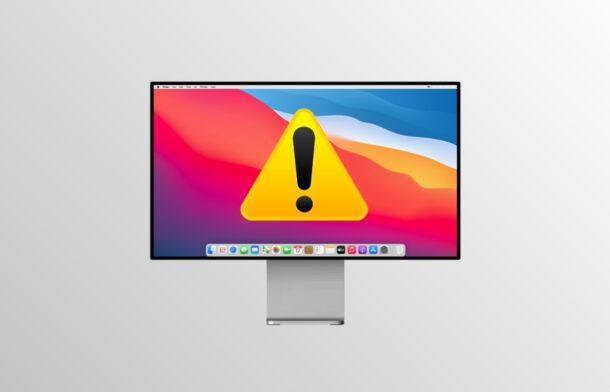
Are you facing issues after updating your Mac to macOS Big Sur? Maybe you're experiencing a problem with something in macOS Big Sur like wi-fi, slow and sluggish performance, battery draining, or perhaps you can't even get the update to begin in the first place. If you're experiencing issues with the latest macOS 11 release, you're not alone, as some Mac users have been facing a variety of problems with macOS Big Sur.
Before you get too concerned though, we're here to help. This article will work through some common issues and resolutions to attempt to fix and troubleshoot various problems encountered with macOS Big Sur.
Every year, shortly after Apple rolls out a major macOS update to the general public, you often find a lot of people complaining about issues with the newest software version. Well, this year is no exception in that regard, as several users have already reported various problems relating to macOS Big Sur failed downloads, Wi-Fi issues after updating, battery drain, and more. To make things easier for you, we have compiled a list of the most popular issues according to the community.
If you're one of those unlucky Mac users who're affected by this recent update, simply read on to learn how you can troubleshoot and fix some of the most common macOS Big Sur problems that have been reported so far.
Before continuing, you'll want to make sure you have a full backup of the Mac available with Time Machine or your backup method of choice to prevent any data loss.
Issues with macOS Big Sur Download & Installation
Several users have reported that they're unable to download the macOS Big Sur software update or that the download is very slow. Although this is likely an issue when servers are overloaded, there are multiple other reasons why you can't download the newest software.
If you're getting an error that states "Update not found – the requested version of macOS is not available" when trying to update your device from System Preferences -> Software Update, you can visit the link to download from the Mac App Store and then initiate the download via the Software Update panel afterwards.
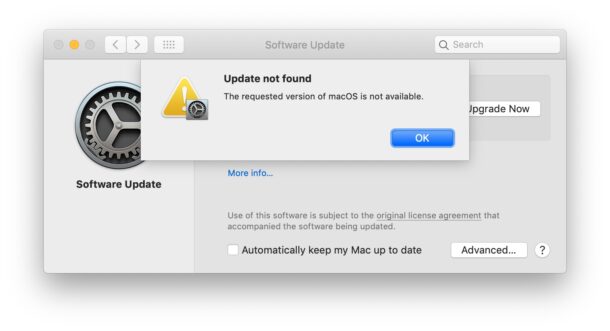
On the other hand, if you're getting an "Installation failed – an error occurred while installing the selected updates" error message, it's probably because Apple's servers are busy due to the number of people trying to update their devices at the same time. The best thing you can do is just wait for a while and initiate the update again. While you wait, you can keep an eye on Apple's System Status page to check for issues with macOS software update services.
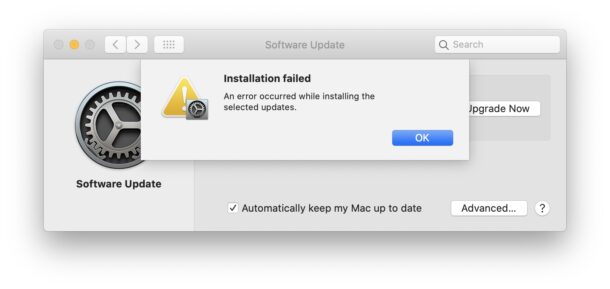
Some users have also reported to have received another error message stating "The package %@ is missing or invalid" when attempting to download or upgrade to macOS Big Sur. Typically, this particular issue can be resolved by installing any available system software updates on the Mac first before going ahead with the major update.
Another common error faced by Mac users is the "gateway timed out" error or "bad gateway" error. Internet connectivity issues or Apple's server issues could likely be a reason for this error as well. To fix this, you can start your Mac in safe mode by holding the Shift key while your system boots and then try to download/install macOS Big Sur again.
You can read this dedicated article for more information on errors with macOS Big Sur download and installation.
Unable to Install macOS Big Sur on Older MacBooks
If you're using a Late 2013 or Mid 2014 model of the 13-inch Retina MacBook Pro, you may have gotten an error saying that the update cannot be installed on this computer. Or, your Mac may have booted up to a blank screen or circle with a line through it.
In such cases, you can successfully restart your Mac by pressing and holding the power button on your MacBook for at least 10 seconds. This will force restart your Mac. Now, unplug any external device that's connected to your Mac and power it back on to see if it boots normally. If the issue persists, resetting your Mac's SMC and NVRAM/PRAM can be really helpful, as suggested by Apple.
Wi-Fi Dropping, Slow, Other Wireless Problems
If you're having trouble connecting to a Wi-Fi network or you're unable to access the internet properly, especially after updating to macOS Big Sur, you're not alone. A handful of users have reported that the connection drops frequently, Mac doesn't reliably connect to wi-fi, or the overall network performance is lacking.
Although software-related problems could be the reason why you're having trouble, improper DNS settings, interference from USB devices, and wireless router/modem issues could also prevent you from accessing your Wi-Fi network. If you're lucky, resetting your Wi-Fi router should fix some of the connectivity-related issues.
If resetting your modem didn't help in your instance, you may have to make a new network location with custom settings or create a new Wi-Fi configuration in macOS Big Sur. Resetting the SMC and NVRAM of your Mac can sometimes help in resolving Wi-Fi issues too.
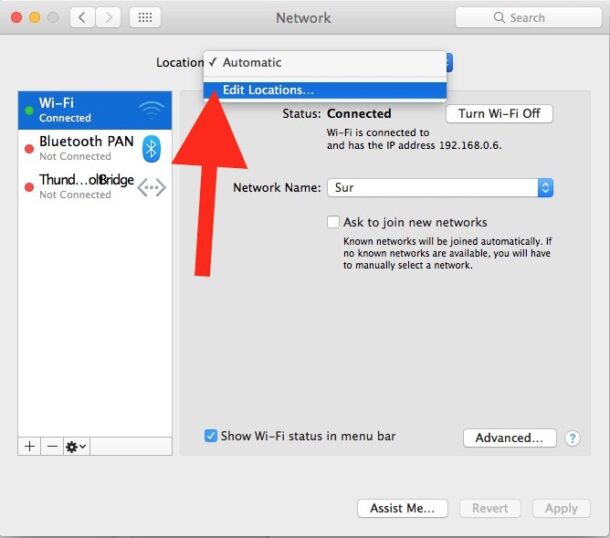
Mac Fails to Boot and Login Problems
Some users have been facing trouble booting their Macs after successfully updating to macOS Big Sur. More specifically, when they try to power on their Mac, it gets stuck on the loading screen, or they're just unable to log in to their user accounts.
If you've been facing a similar issue, you can try force restarting your Mac to see if that fixes the issue. To force restart a Mac, press and hold the power button until the screen goes black. Then, wait for a few seconds and power it back on again. In regards to login issues, you can first try signing in with a different account, if you have any. You can also try to boot into recovery mode and run First Aid via Disk Utility.
Another last resort option would be to boot into Safe mode and re-install macOS Big Sur, which carries some risk of data loss, so be sure you have a full backup of your Mac before you do anything like that.
Battery Drain after macOS Big Sur Update
Shortly after installing macOS Big Sur, you may notice that the battery on your Mac is draining faster than usual. This is mostly due to the fact that your Mac is performing some background tasks and indexing after the update. This activity utilizes system resources which in turn impact the battery life. Usually, this is temporary since the battery performance goes back to normal after a few hours once all the background activity and optimizations are complete.
However, if the battery drain is a persistent issue in your case, you may have to check the built-in Activity Monitor to see what apps have the biggest impact on your Mac's battery performance. You can launch Activity Monitor from Spotlight search which can be accessed by using the Command + Space keyboard shortcut. After launching, click on the "Energy Impact" tab (accessible only on MacBooks) to sort apps based on their battery impact.
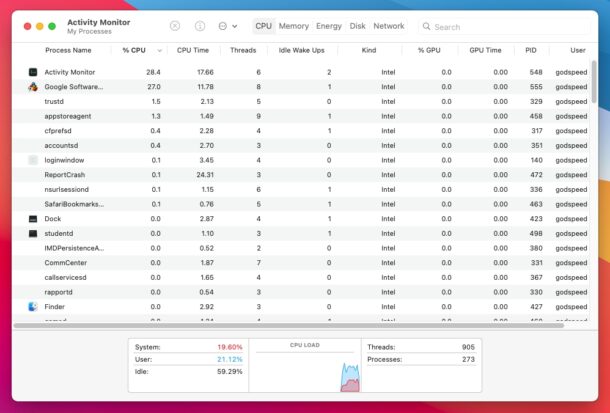
Unwanted Apps Running in Background
Now that you know what apps have the biggest impact on your Mac's battery, it's time to prevent these apps from launching automatically upon startup. Third-party apps like Spotify, OneDrive, Dropbox, etc. automatically run in the background on your Mac after you log in which could take a toll on the battery.
To control what apps can launch automatically after boot, head over to System Preferences -> Users & Groups and click on your Mac username. Next, click on "Login Items" as shown in the screenshot below and you'll be able to find and remove any unwanted apps that automatically open when you log in.

Apps Crashing or Not Launching
Some of the apps installed on your Mac may behave abnormally or crash upon launching after updating to macOS Big Sur. This is likely because the apps haven't been updated to support the latest version of system software yet. Therefore, it's highly recommended to update all your apps after installing the update, since some apps may have received optimization updates to work properly with macOS Big Sur.
To check for app updates, launch the App Store on your Mac from the Dock and click on "Updates" on the left pane. If the issue persists after updating, you can try force quitting and relaunching the app to see if it fixes the issue.

Noisy Fans after Installing macOS Big Sur
If the fans on your Mac sound louder after you've updated the software to macOS Big Sur, don't fret. Although the update is complete, macOS will continue to optimize for your machine by performing background tasks and indexing for a few hours. This operation utilizes more system resources, because of which the fans on your Mac kick in and spin at a higher RPM to cool down system components. Once the background activity is complete, the fan behavior should go back to normal.
Generally Sluggish Performance
This is a pretty common issue after every major macOS update, but there's nothing to worry about in most cases. After successfully installing the update, if macOS Big Sur notified you with a message saying "Optimizing Your Mac: Performance and battery life may be affected until completed", then it's nothing out of the ordinary.
As mentioned earlier, your Mac continues to perform background tasks and indexing for a few hours which could not only impact the battery life but also affect the overall performance temporarily. Give it a day or so for all the background activity to complete and see if the performance has gone back to normal.
If you recently purchased a new Mac powered by Apple's M1 chip, you may experience performance issues with certain apps that aren't optimized for Apple silicon. This is because many developers are yet to update and optimize their apps for the new M1 chips. These unoptimized apps or apps designed for Intel-based Macs are basically emulated to run on M1 Macs using Apple's Rosetta 2 translation environment. This situation should greatly improve in the next few months as more developers add support for these new processors.
Printer Not Working After Big Sur
For some Mac users, their printers have stopped working after updating to macOS Big Sur.
The first thing you should do is check to see if updated printer drivers are available for your particular printer from the manufacturers website. That of course will vary depending on the printer manufacturer, and you can also contact their technical support department for assistance.
Another option is to reset the print system on the Mac, or to uninstall and reinstall the printer by doing the following:
- Open System Preferences and go to Printers
- Select the printer and click the minus – button to delete the printer from the Mac
- Next reboot the Mac
- Reinstall the printer
Try printing again, if it work's you're good to go. And again, if this doesn't work it may be time to reach out to the official technical support department of your printer manufacturer.
Nothing working to resolve the issue? Consider downgrading
If none of the above troubleshooting methods worked in your favor and macOS Big Sur is still unusable on your Mac, you may be looking to downgrade back to macOS Catalina or Mojave.
In that case, you can restore your Mac from a previous Time Machine backup, which is arguably the most convenient way of reverting to macOS Catalina or Mojave. You will of course need a valid Time Machine backup to be able to accomplish that.
Alternatively, you can try re-installing macOS via Internet Recovery, which will attempt to reinstall the version of macOS that came with the Mac.
And of course, if you need any further assistance, you can get in touch with official Apple Support. You have the option to chat with Apple Support from any device or talk to a live agent at Apple for step by step instructions.
–
Hopefully you were able to resolve whatever problems or issues that were affecting your Mac after updating to macOS Big Sur. What specific issue were you facing on your macOS machine? Which of these troubleshooting methods worked for you? Did you have another problem not listed here? Did you find another solution to your issue? Do you have any additional tips to share with us? Share any of your experiences with macOS Big Sur-related issues in the comments below, and voice out your thoughts and opinions too.
Source: https://osxdaily.com/2020/12/01/troubleshoot-macos-big-sur-issues-problems/
0 Response to "Big Fish an Error Has Occurred Please Try Again Mac"
Post a Comment